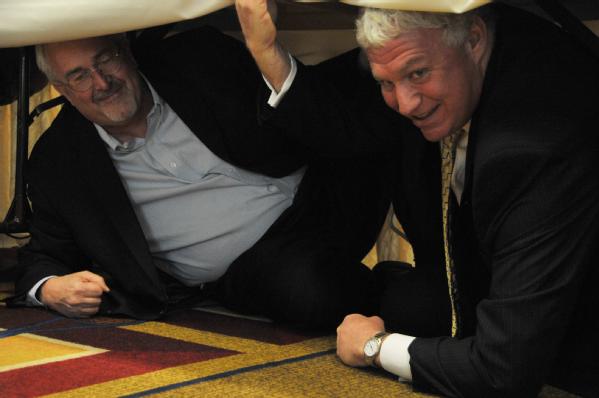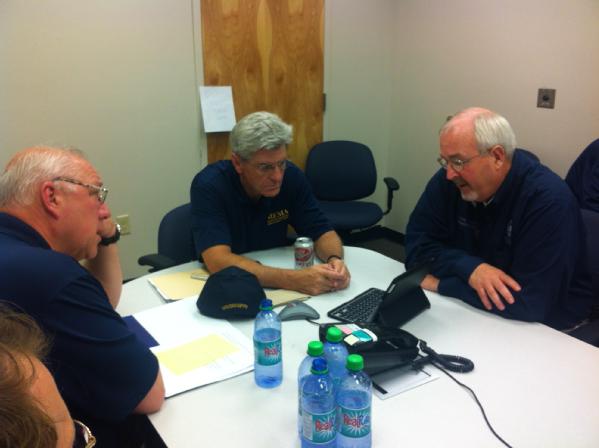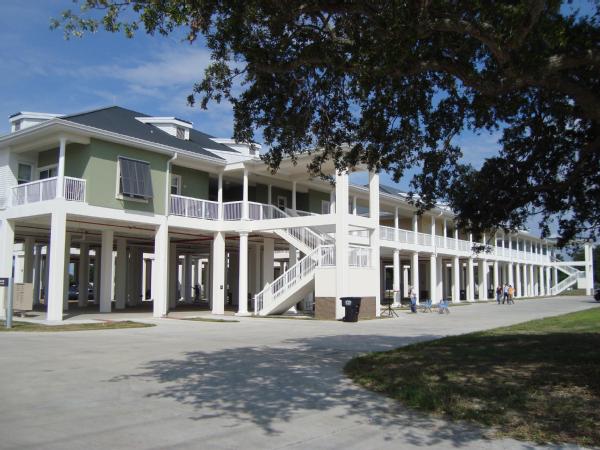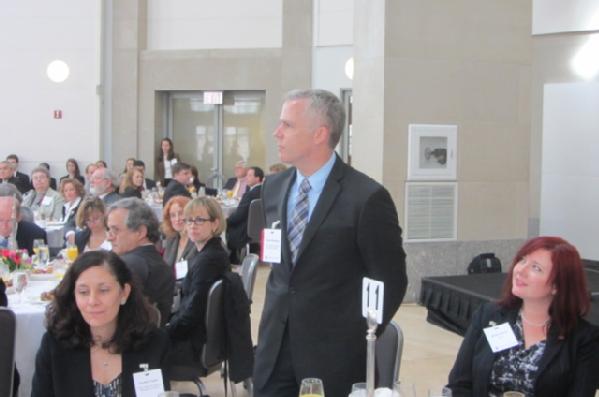Practicing Safety and “Shaking Out”

CAPTION: Administrator Craig Fugate (left) and Deputy Administrator Rich Serino practice "Drop. Cover. Hold On." as part of the Great ShakeOut earthquake drill held October 18.
Those of us in emergency management have a lot to say about getting prepared. We urge folks to learn about the hazards in their area, get an emergency kit, and have a plan for what to do if a disaster should strike. Despite those commonly-used messages, there’s one thing I wish we encouraged people to do more – practice. Practicing your emergency plan makes you comfortable with it. And it also makes it much more likely that during an emergency, you will actually use the plan you drew up and practiced ahead of time.
Practicing can have an impact on your own safety, too – which is why FEMA was encouraging participation in the Great ShakeOut earthquake drill that happened earlier today. Thousands of organizations and millions of people around the U.S. participated in the drill and practiced how to stay safe should an earthquake strike their community. They put the three steps of “Drop. Cover. Hold On.” into action whether they were at their office, school, or home.
Even if you missed the ShakeOut drill this morning, you can practice earthquake safety at any time. It’s as easy as finding a table or desk where you can practice:

Practicing these steps is a great starter for getting better prepared. Earthquakes occur all year long across our country – in a lot of places you wouldn’t expect. And whether your community is vulnerable to quakes, blizzards, hurricanes, floods, or wildfires, I challenge you to take simple actions and raise your practice to the next level:
- Know the resources in your home – if a disaster struck tomorrow, would you have enough supplies, water, and food to sustain you and your family for at least 72 hours? If you’re answer is “probably not” then Ready.gov has some great tips on building your family’s emergency kit with items already around your home.
- Know the resources in your community – do you know the emergency management resources in your neighborhood or city? Where is the nearest hospital? Is there a safe room or shelter where you could go in the event of an emergency? If your answers are “I’m not sure”, then check out this list of emergency management agencies and start learning about the key resources available in your neighborhood.
- Know how you would stay in touch with family and friends – if the power was out and phone lines were unavailable, do you know how you would communicate with loved ones to let them know your status? This is a vital part of any family emergency plan – you can download a template of a family plan at Ready.gov so you can answer “yes” to this question.
Finally, I’d like to give a big “thank you” to the schools, businesses, government agencies and families who participated in today’s Great ShakeOut drill. I hope it got you thinking about how to stay safe should an earthquake strike. Leave me a comment below and let me know how the ShakeOut drill went for you, or how you plan on participating next year!





